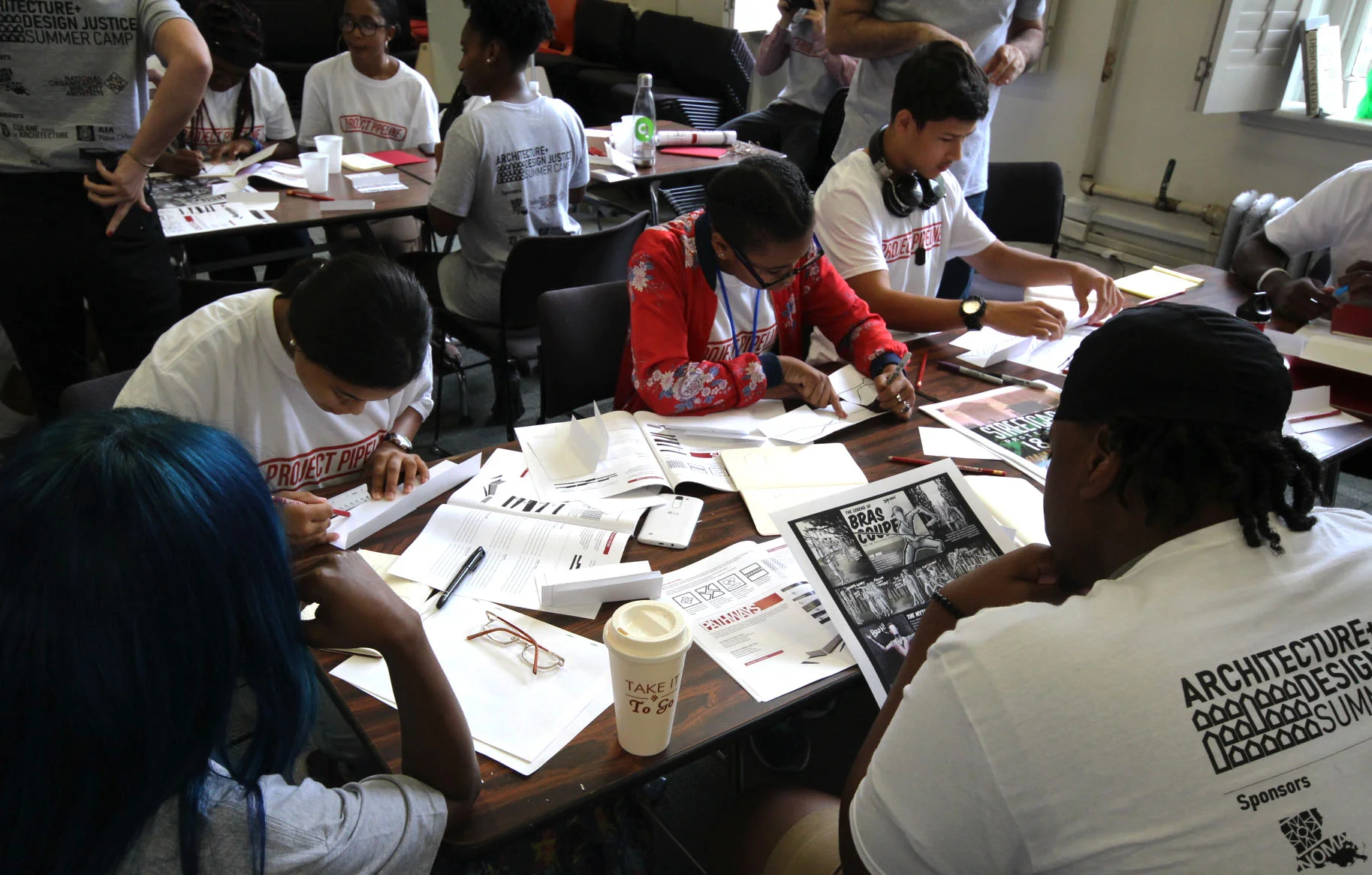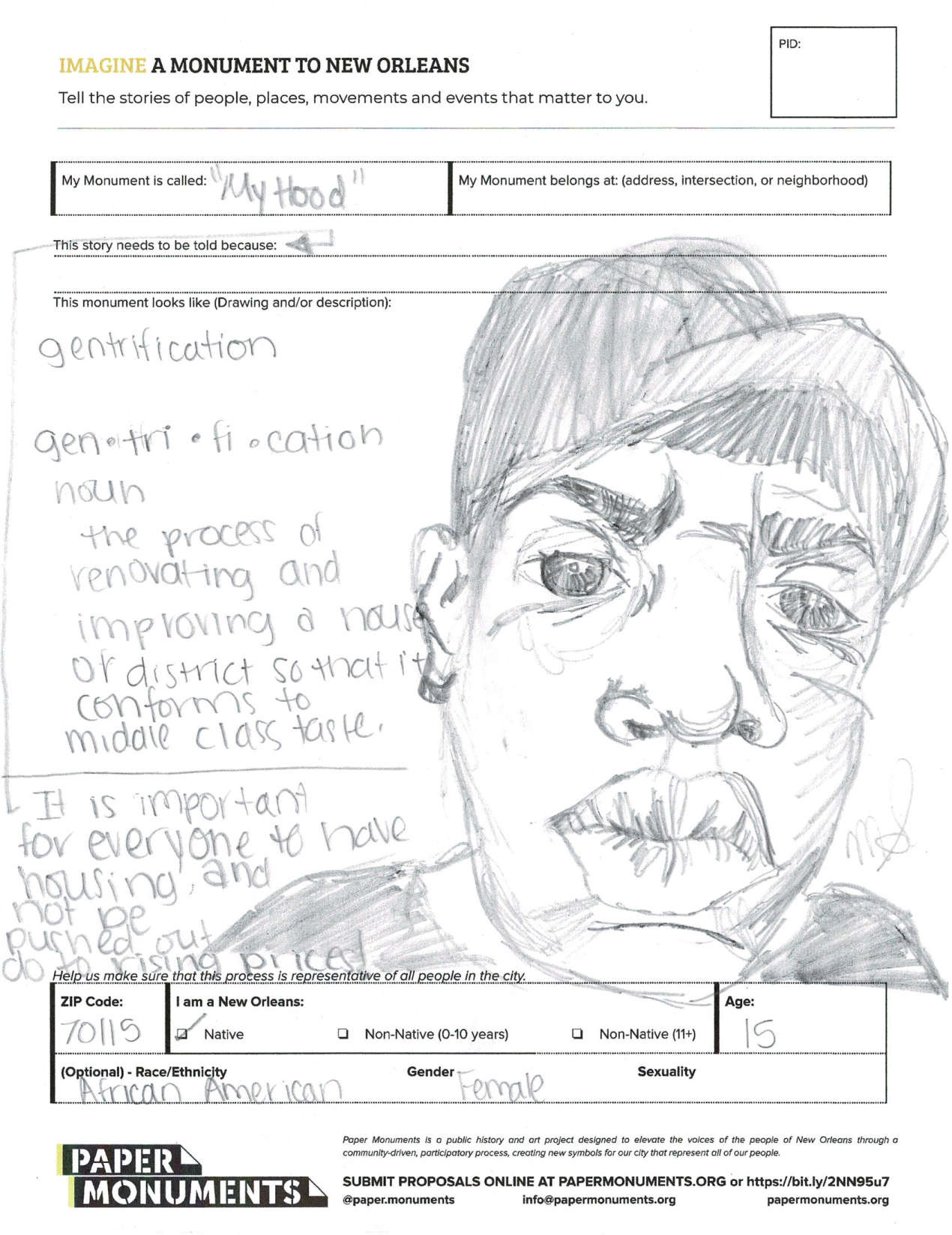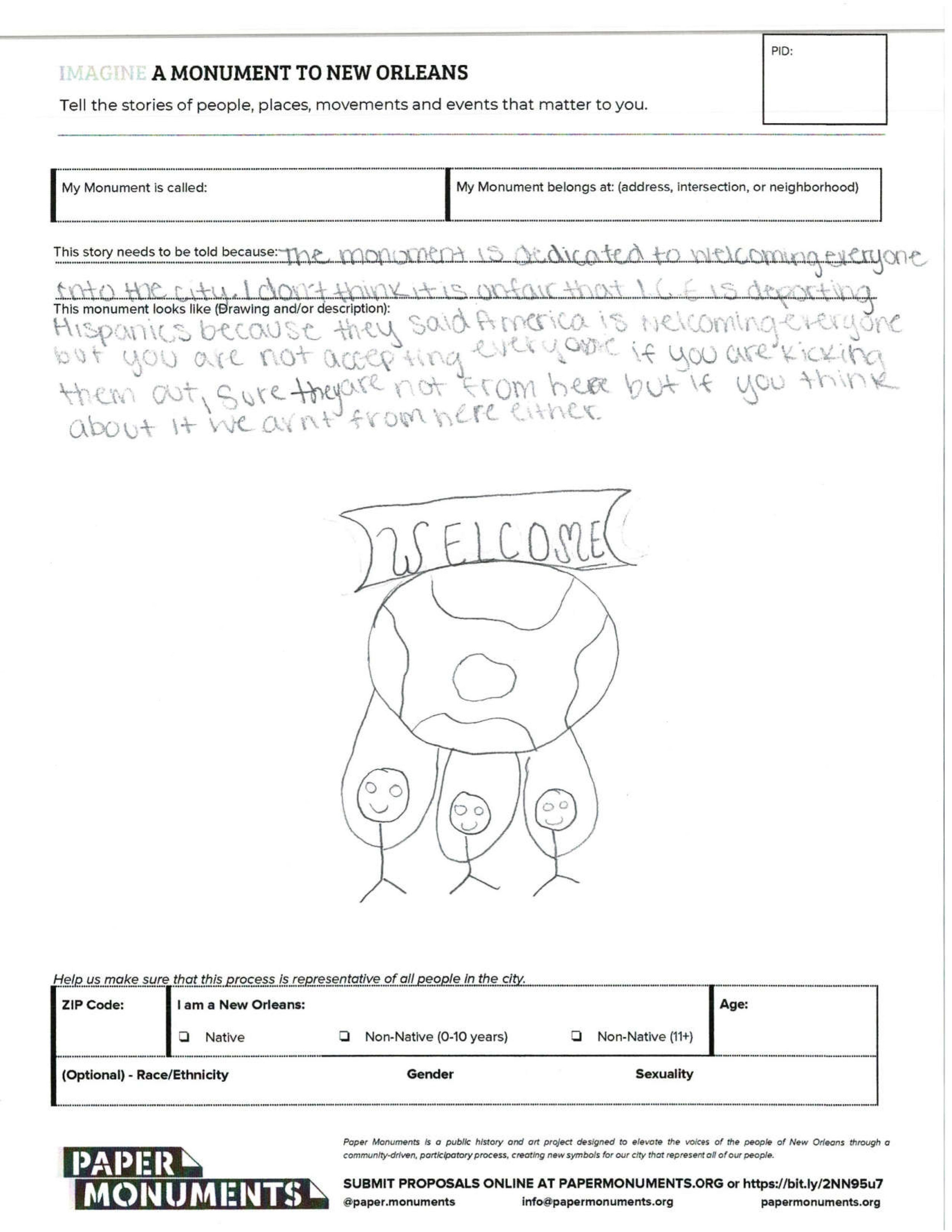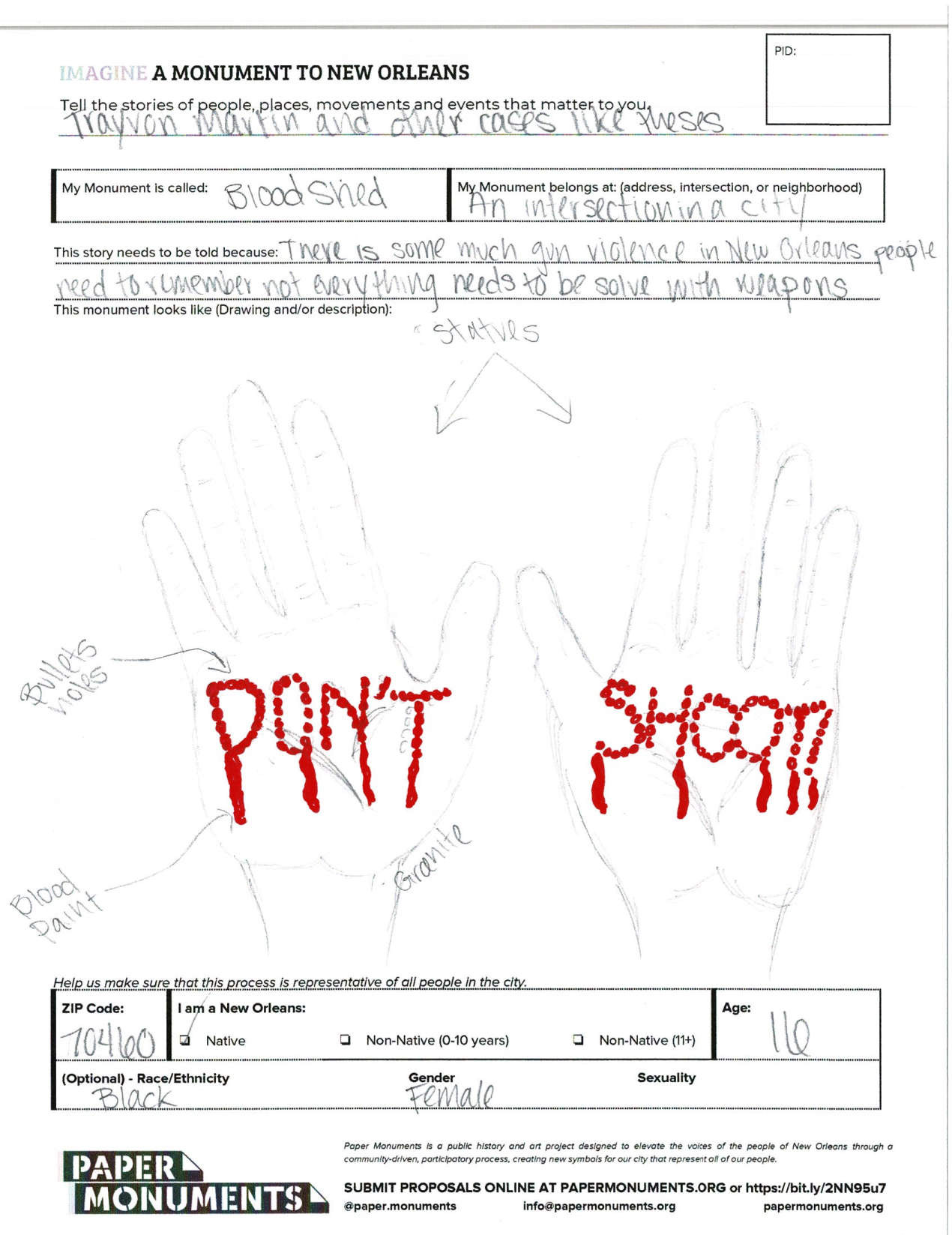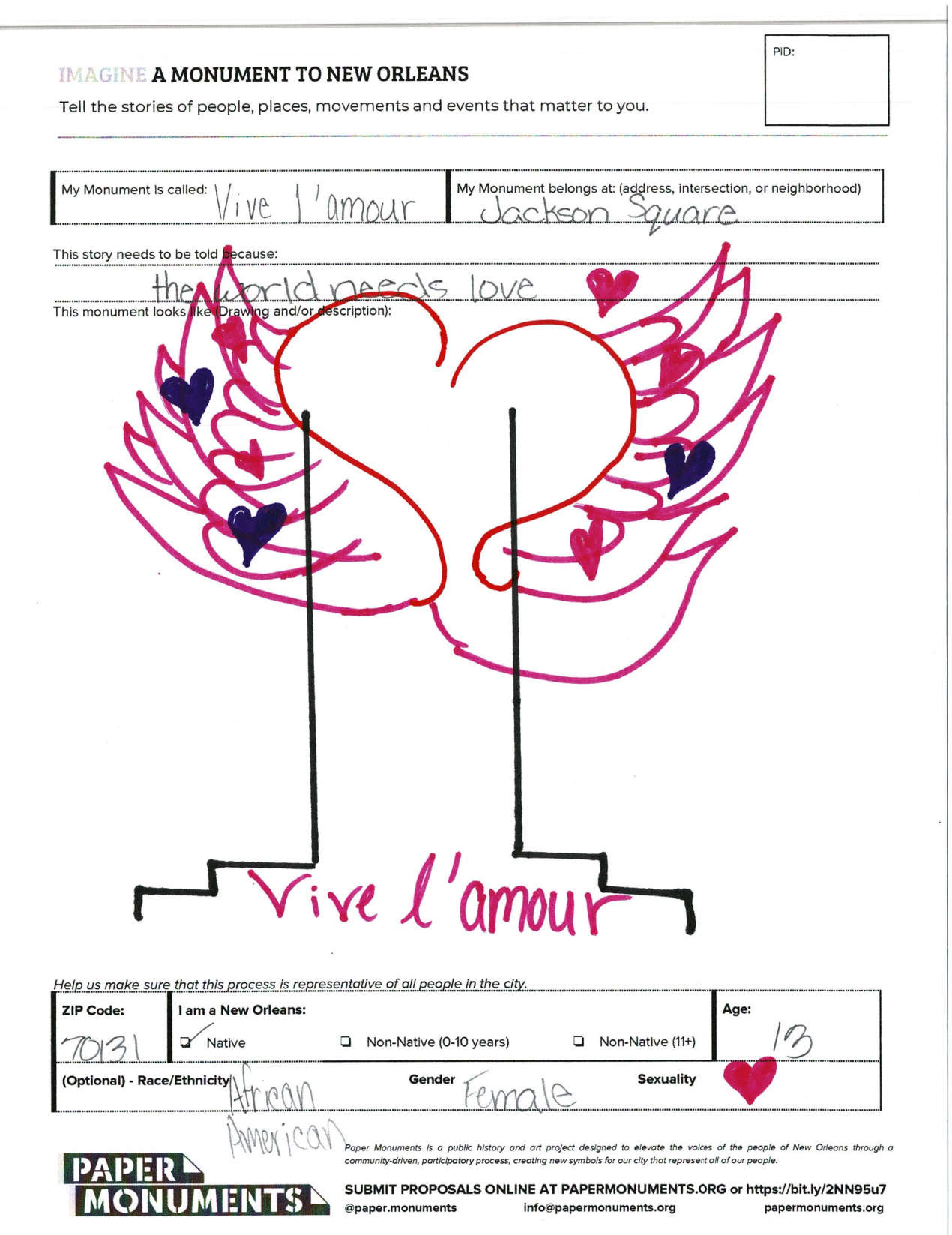Making Space
Project Pipeline mentors John, Taylor and John work with campers on a community-engaged design process at the 2018 NOMA Louisiana Architecture+Design Justice Project Pipeline Summer Camp.
Representation is central to Paper Monuments. We invite all New Orleanians to perform a representational act by drawing, putting pencil to paper and representing visually or verbally their ideas for what a monument to the city might look like. To date we've received over 800 representations, drawn from the unique perspectives of an equal number of our city's people. They tell the stories of people, places, movements, events and ideas that matter to them.
Representation dictates who has the power to make space for the ideas they think are important. In political science, descriptive representation is the idea that voters should seek to elect candidates who share their descriptive characteristics, such as hometown, occupation, gender, class and race, in the hopes that they will legislate in their interest. When a group of people is descriptively represented in a democratic government, they have a power to shape society equal to their numerical proportion of the population.
400 years of White supremacy, gendered oppression and settler colonialism have endowed some of us with power vastly greater than that which a fair distribution might entail. This fact is reflected at all levels of national life, in policies and professions, spheres political and personal. It is a daunting past, and present, with which to reckon.
Paper Monuments, in the task of collecting and sharing stories about this history and the way it shapes the present, seeks to remain ever-conscious of the ways in which it is within our power to subtly and not-so-subtly shift power and make space for the representation of people whose identities are marginalized, oppressed, obscured and ignored. To do this requires an awareness of identities, as applied to people, places, events and movements. We collect Public Proposal forms in venues and locations which allow for our proposal pool's contributors to descriptively represent the city of New Orleans' population. We track the demographics of our artists and storytellers to ensure that, as much as possible, our stories are represented by people who descriptively represent their content, by hometown, occupation, gender, class and race.
This past week, Paper Monuments was fortunate enough to collect Public Proposals at a very special venue. The place was the Tulane School of Architecture, in the heart of Uptown, but the space was the National Organization of Minority Architects' Project Pipeline Architecture+Design Justice Summer Camp. Project Pipeline is designed to address the systemic underrepresentation of women, Black people and other people of color in the 92% White, 2%, 82% Black, 82% male architectural profession by building a 'pipeline' of talented young designers from high school through college and beyond. This year, over 30 students from high schools around New Orleans gathered with more than 20 mentors from the student and professional communities for a three-day feast of knowledge, creativity, conversation and Welch's fruit snacks.
The camp's mentor team included longtime curriculum co-coordinator and Paper Monuments co-director Bryan C. Lee, Jr., Paper Monuments team members Brit Lindsey, John Ludlam and myself, and many others who have generously given their time to the Paper Monuments, including Michelle Barrett, Jonathan House and Keristen Edwards. The team led students through a slate of familiar and new design exercises, including a storytelling project based around the narratives of Paper Monuments posters including PMPPL#022 The Legend of Bras-Coupe and PMEV#022 Streetcar Protests of 1867.
Campers also filled out Public Proposals, a selection of which are curated in the gallery alongside this piece. These young men and women chose to represent gentrification and the displacement of Black and brown families, murder by police, and gang violence; they chose to represent family, love, hope and beauty. I look forward to the day they will be making space themselves, as the architects, designers, planners, policymakers, legislators, writers, artists, teachers and activists of a more just and equitable world.

